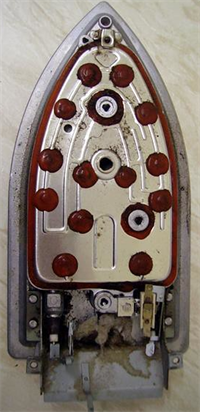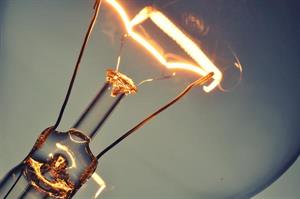PDF chapter test TRY NOW
The property of a material that helps the movement of charges and thus the current flow in the circuit is known as Conductance. It is denoted as G.
Mathematically, it is defined as the reciprocal of its resistance (R).
The formula of conductance 'G' is given by,
The SI unit of conductance of a material is ohm^{–1} (or) mho (or) siemen.
Conductivity:
Electrical conductivity is the reciprocal of the electrical resistivity of a material. The SI unit is ohm^{–1}\ metre^{–1} (or) mho\ metre^{–1} (or) siemen\ metre^{–1}.
The formula of conductivity is given by
Electrical conductivity is a material's ability to pass the current through it.
The conductivity of conductors is higher than that of insulators. However, the resistivity of conductors is lesser than that of insulators.
Like resistivity, conductivity is also constant for a material. The resistivity of some common materials at 20\ °C are shown in the table below.
Material's nature | Material | Resistivity of material (\Omega\ m) |
Conductors | Silver Copper Aluminium Tungsten Nickel Iron Chromium Mercury Manganese | 1.60\times{10^{-8}} 1.62\times{10^{-8}} 2.63\times{10^{-8}} 5.20\times{10^{-8}} 6.84\times{10^{-8}} 10.0\times{10^{-8}} 12.9\times{10^{-8}} 94.0\times{10^{-8}} 1.84\times{10^{-6}} |
Alloys | Constantan Manganin Nichrome | 49\times{10^{-6}} 44\times{10^{-6}} 100\times{10^{-6}} |
Insulators | Glass Hard rubber Ebonite Diamond Dry paper | 10^{10} to 10^{14} 10^{13} to 10^{16} 10^{15} to 10^{17} 10^{12} to 10^{13} 10^{12} |
What is an alloy?
An alloy is a mixture of two or more metals or elements.
Example:
Constantan is an alloy of copper (Cu) and nickel (Ni).
Manganin is an alloy of copper (Cu), manganese (Mn) and nickel (Ni).
Nichrome is an alloy of nickel (Ni), chromium (Cr), manganese (Mn) and iron (Fe).
From the above table, it is clear that the resistivity of an alloy is higher than that of metals. At higher temperatures, alloys do not oxidise or burn easily. Hence, alloys are used in electrical heating devices, like electric iron, toasters, heaters, etc.

Alloys inside electric iron box
Tungsten, an alloy of nickel and copper or nickel and iron, is commonly used as a filament in electric bulbs. Whereas, the metals like copper and aluminium are used for electrical transmission lines.

Tungsten in light bulb
